(this blog contributed by Michael Pistininzi, one of our staff horiculturists)
Magnolia is an ancient genus that has survived millions of years of climate changes and geological transitions. The fossil record of Magnolias date back before bees, and were believed to be pollinated mainly by beetles. Because of its endurance, the genus Magnolia is extremely diverse and can be found all over the world. Their big blooms are signs of spring, although not all Magnolias bloom in the spring. With such diversity, it is difficult to generalize characteristics of the Magnolia. Most of us notice the large spring blooms and large, waxy leaves.
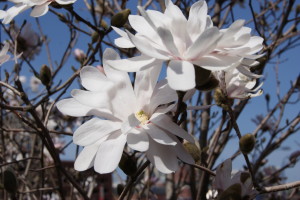
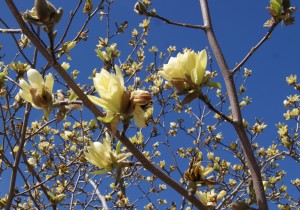
The Rose Kennedy Greenway currently hosts over seven different species of Magnolia, many of them hybrid cultivars. Some Magnolia are evergreen like Magnolia virginiana, also known as Sweetbay Magnolia, which can be found throughout the Wharf District parks. These are a native species, mostly found along the Eastern shore of North America with large, sweet smelling flowers. In the North End, we host Magnolia ‘Elizabeth’, Magnolia ‘Butterflies’, and Magnolia ‘Lois’ which are hybrid species with large, yellow flowers that are fairly fragrant. Magnolia stellata, also known as Star Magnolia is dotted along the Greenway and can be viewed at the Armenian Heritage Park and the Urban Arboretum. It has large, white blooms that usually appear before the hybrid varieties bloom. Chinatown hosts Magnolia ‘Jane’, which is a smaller hybrid tree with pinkish to purple flowers which bloom in early spring.
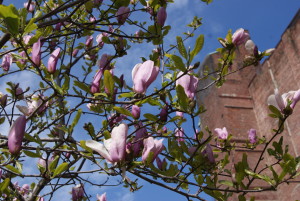
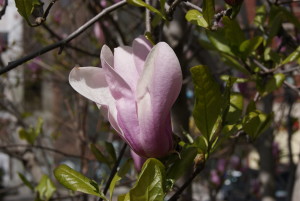
One of my personal favorite Magnolia specimen can be found in the Fort Point Channel Parks, right along Atlantic Ave. The Magnolia ashei also known as the Bigleaf Magnolia boasts some of the largest leaves of the genus with leaves growing up to 2 feet long, bigger than a frisbee! The branches of this tree are often seen bowing under the weight of its own foliage. The tree is native to the Atlantic Southwest region, and is considered endangered by the Florida Department of Agriculture. The Greenway is lucky to host a few of these awesome trees.
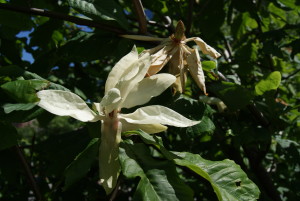
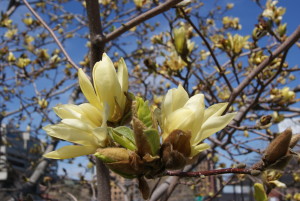
Whether park goers are looking for Magnolia blooms or Cercis flowers (Red Bud) the Rose Kennedy Greenway has plenty to see. Most trees bloom before they leaf out which creates beautiful branches of blooms and much missed color to the winterized landscape. With our docile winter, many trees pushed out new buds early, sustaining some damage with a late freeze, but now are blooming with resilience.



